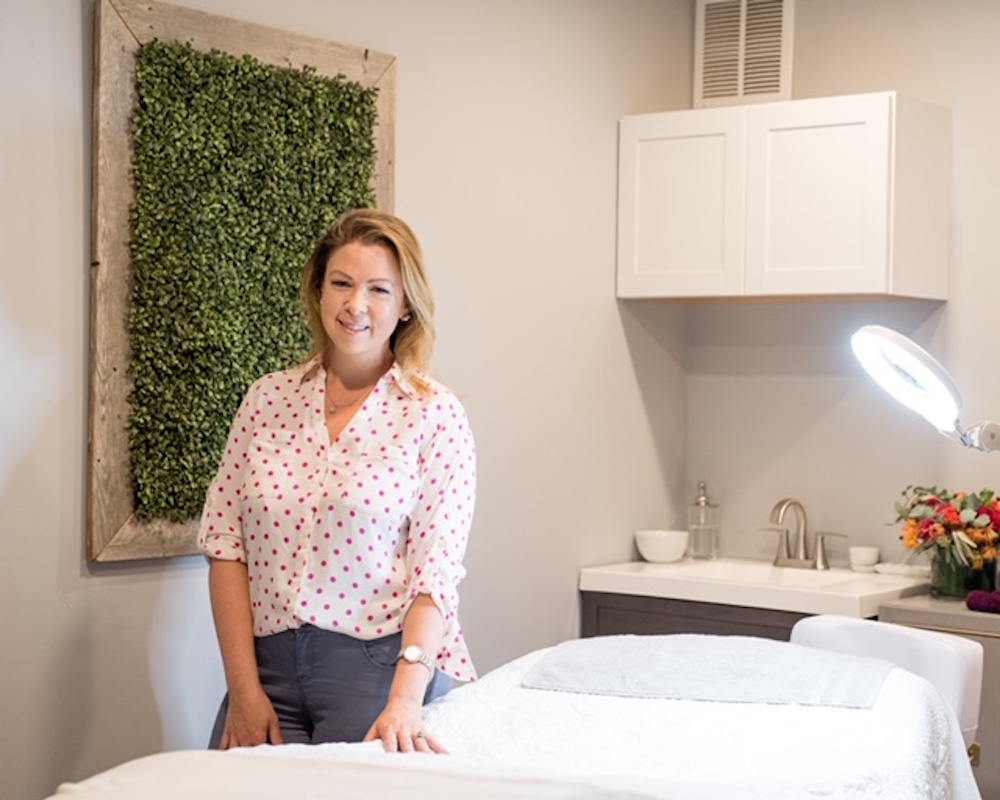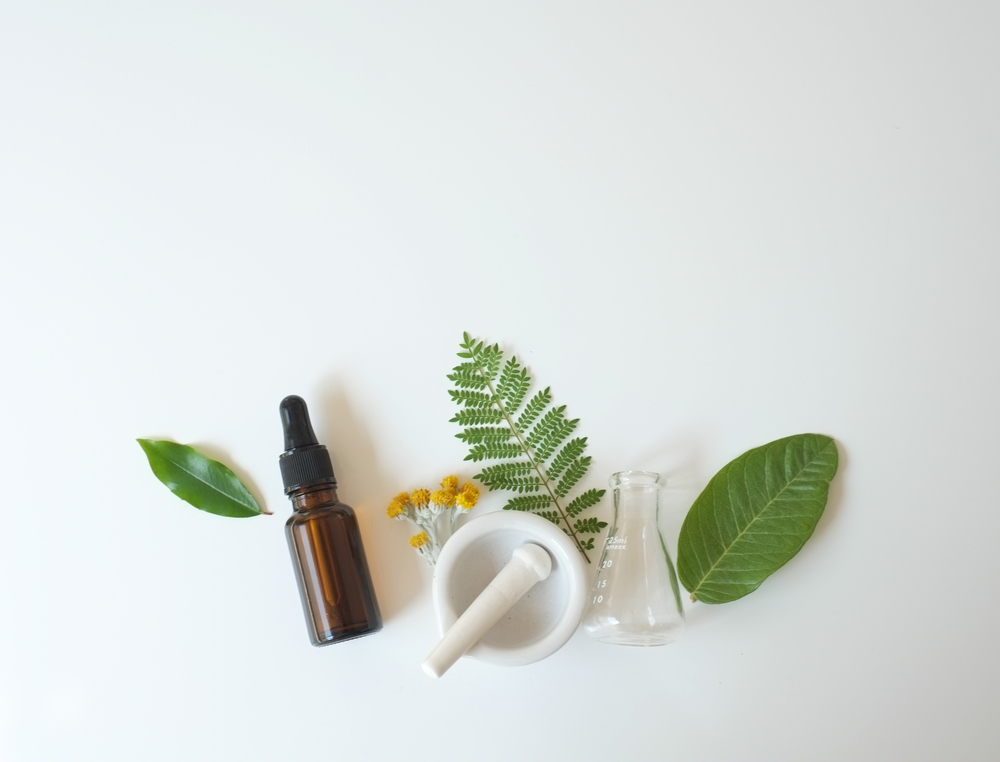Cancer treatment introduces a unique set of skin issues that can be concerning and difficult to address. The most effective way to deal with skin care during chemotherapy, radiation, and other treatments is to enlist the help of an expert in oncology esthetics.
Raena Mason is an esthetician specializing in oncology esthetics and owner of Sanara Integrative Beauty. In our interview, Raena discusses radiation and chemo skin problems, plus how other treatments affect the skin and how best to handle them
An Interview With Oncology Esthetician Raena Mason on the Best Skin Care During Chemotherapy and Other Types of Cancer Treatment

Blissoma: What is oncology esthetics?
Raena Mason: Oncology esthetics is a complimentary service that we as professionals (through specialized training) provide to patients who have been diagnosed with cancer. No matter where they are on their journey with cancer, oncology esthetics can help alleviate the side effects of treatment by prepping the skin before treatment, offering support during treatment, aiding the skin and body in recovery after treatment, and relieving feelings of discomfort from chemotherapy, radiation, stem cell therapy, lymph node removal surgery, or all of the above. Specific modifications of skin care treatments are used to ensure the safety of people who are in the struggle of fighting cancer.
B: What are some of the specific skin concerns people going through treatment encounter?
RM: There are different side effects depending on the type of treatment. Treatments like chemo, immunotherapy, and radiation fight cancer by targeting specific molecules in tumors and those same molecules that are getting attacked by treatment are also in our skin, hair, and nails (integumentary system). Radiation and targeted treatment not only target and kill tumor cells but also any healthy cells. So, you can expect to see changes in and around those areas.
CHEMO SKIN PROBLEMS
Xerosis: With chemo, the most common side effects are xerosis (dryness, flakiness, and peeling) and erythema (reddening of the skin). The skin actually gets so dry that it thins out and feels like it does after a sunburn. Hot water can dry out the skin even more, so we use lukewarm water on our clients’ skin and recommend they take warm sponge baths instead of hot showers at home. I also recommend adding oil in the bath to help restore the skins oiliness and hydration. Applying moisturizer liberally when coming out of the shower or bath while skin is still damp helps to bind extra moisture to the skin. Drinking plenty of fluids, such as water and herbal teas, helps with hydration. It’s also important to avoid extreme temperatures and alcohols in skin care products.
Chemotherapy Skin Rash: Rashes are common with anti-cancer drugs and targeted therapy. Rashes usually appear 1-2 weeks after starting treatment and typically start out looking red and feeling warm like a sunburn. About a month into treatment the skin can crust over and look very dry and red. Pimple-like bumps can appear, accompanied by itching, burning, and stinging, leaving the skin feeling tender. Rashes usually last for about a month after treatments are finished and are sometimes a sign of allergic reaction to treatment.
On the other hand, changes in skin aren’t always bad or negative. Interestingly, research has shown a link between rashes and prolonged overall survival rate in melanoma patients. And because the chemo has to leave the body somehow, the skin will pull toxins from the body through the skin. After chemo, the skin can feel itchy and burning, a side effect from this detoxing process. Doctors may prescribe topical antibiotics or cortisone cream. I recommend limiting sun exposure, wearing loose fitting clothing, avoiding scratchy material, wearing light, breathable fabrics, such as cotton, and making sure not to leave sweat on the skin.
Discolored Skin: Chemotherapy and targeted therapy can actually change the color of the skin on the whole body, as well as in the treated area. The skin can appear darker, lighter, or even a yellowish/gray hue. Hair color can also be affected. These effects usually fade over time once treatment is finished.
Changes to Nails: Chemotherapy sits in the bed of the nail, making them swollen, irritated, red, and cracked. These cracks and sores can look like an infected ingrown nail and can be very painful. Using cuticle cream or oil and wearing gloves, especially when gardening or cleaning, and keeping nails short to avoid chipping and breaking are beneficial. I recommend avoiding pedicures and manicures during treatment because of these side effects, and because the body is vulnerable and more susceptible to infection at this time.
Sensitivity to Sun: Anti-cancer drugs tend to thin and dry out the skin, leaving the skin more susceptible to photosensitivity and sunburn. I recommend practicing sun safety by limiting time in the sun and wearing a broad spectrum SPF of 30 or higher made with zinc or titanium dioxide, and applying every two hours or every hour if in and out of the water. It’s also a good idea to wear UV protective clothing, such as long sleeves, cover-ups, and hats.
Changes in and Around Eyes: Drugs and treatment can cause a burning feeling in the eyes, making them dry and red. They may also become tender or swollen, forming a crust around the eye. I recommend using eye drops to keep eyes hydrated and applying a gentle wash to keep them clean.
Hand and Foot Syndrome: Chemo may induce a condition that affects the palms of the hands and the soles of the feet. Symptoms are pain, burning, swelling, redness, tingling, numbness, blistering, and peeling of the skin. Sometimes the dose of chemotherapy may have to be adjusted to alleviate these symptoms or stopped completely until the skin heals. I recommend avoiding high temps and hot baths for 1-5 days after treatment. Wearing comfortable shoes is a must to avoid applying friction and pressure, which makes the skin more prone to this type of discomfort. Mindful massaging of hands and feet is also beneficial.
RADIATION SKIN PROBLEMS
Erythema: Erythema (redness and irritation) often starts out looking like sunburned skin but can develop into a blister-like boil. If the skin doesn’t have time to heal before the next radiation treatment, the condition can worsen.
Burns and Moist Reactions: Radiation causes the skin to peel and burn in skin folds and areas prone to chafing, like the buttocks, under the arms, under the breasts, and behind the ears. Skin becomes wet due to oozing of bodily fluid from open areas causing sores and ulcers. This can easily lead to infection, so I recommend keeping the area dry and soothed, which will aid the skin in healing and can take about a month after treatment is finished.
Swollen Skin: Skin in the affected area may become swollen and puffy, the body’s normal reaction to damaged cells and the tissue surrounding it. When the skin is radiated or when lymph nodes are surgically removed, the body sends a rush of healthy cells to the area to try to heal it, causing edema. Swelling usually goes away after treatment. For severe cases of edema, I recommend seeing a doctor, oncologist, or lymph specialist.
Skin Growths: Growths can occur on the skin, usually forming in an area that has come into contact with radiation. Cutaneous horns can form in these areas, making it painful or annoying for the client. I recommend the client see a dermatologist referred by their oncologist to deal with this issue.
B: Is there a special approach that should be taken with skin care and esthetics during chemo?
RM: Yes! Caution, caution, caution! Having a detailed intake form is especially important to know where the cancer is or was, where the placement of the port-a-cath is, and where the lymph node removal surgery took place so these areas can be avoided. Moving lymph in the wrong direction can cause edema and more issues for clients.
It’s recommended to NOT extract or exfoliate the skin while clients are undergoing chemotherapy.
It’s important to remember that the clients’ immune systems are compromised during treatment and are at a huge risk for infection. It is extremely crucial that everything that is used be properly sanitized and disinfected. I recommend wearing gloves and/or washing your hands for at least 20 seconds before touching a client. Clients must wait 10-14 days after receiving chemotherapy to have any skin care treatment because that time period is when their white blood cell count is the lowest, making it difficult to fend off any pathogens entering the body. And the chemo is still leaving their body for those two weeks, which makes skin more sensitive.
B: Are there chemo after effects on skin once treatment is completed and how are they best handled?
RM: Clients are often surprised by the effects of treatment and how long effects can last. Typically, the skin starts healing after treatment is through. But the type of treatment or combination of treatments, as well as the condition of the skin prior to treatment, affect healing. It could take the skin anywhere from a couple months after treatment up to years to heal once treatment has ended. Being patient with the skin and body during this time will help the healing process.

B: Why do you choose to use skin care made with natural and organic ingredients?
RM: As estheticians, we need to use the best quality products and ingredients available to us. We specifically choose skin care made from natural and organic ingredients because the body’s chemistry changes during treatment. Using products that contain harsh ingredients and impurities can be harmful to someone who is undergoing cancer treatment. Research shows that 5-10% of cancer cases are attributed to genetic defects while the remaining 90-95% are due to environment and lifestyle, so being mindful of what foods we are ingesting and what ingredients we are putting on our body is hugely important. We also make sure the skin care we use on our clients is fresh, using products within the expiration time frame. It’s essential to know which ingredients should be avoided, and educating your clients on this will give them the tools they need to feel their best during treatment and recovery.
B: What are some ways skin care makes those dealing with cancer feel better both physically and mentally?
RM: Skin treatments for clients while undergoing cancer treatment can absolutely help them feel better, both physically and mentally. During the time these clients are with us, we have an amazing ability to provide a balancing sensation to the parasympathetic and sympathetic nervous system (fight or flight mode). The more balanced the nervous system, the more energy the body has to fight off cancerous cells, boost the immune system, and fight infections, aiding the body in healing. This happens when clients are relaxed and stress is reduced. We are there to help with their skin issues, but also to ease their mind and to listen with intention and compassion, even if it's just for an hour. To them, that is priceless.


